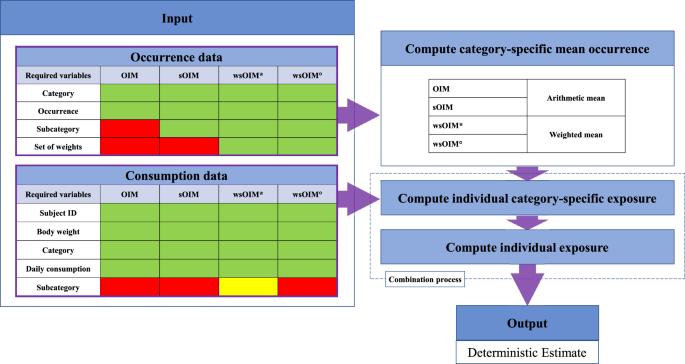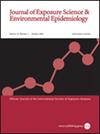Refined methodologies for probabilistic dietary exposure assessment for food contaminants based on the observed individual means methodology
IF 4.7
3区 医学
Q2 ENVIRONMENTAL SCIENCES
Journal of Exposure Science and Environmental Epidemiology
Pub Date : 2025-01-29
DOI:10.1038/s41370-024-00740-4
引用次数: 0
Abstract
The Observed Individual Means (OIM) methodology, based on the non-parametric bootstrap, is usually employed to perform basic probabilistic dietary chronic exposure assessment, and assumes independence and identical distribution of occurrence data within food category. However, this assumption may not be valid if several expected distributions of occurrence can be a priori identified within food category. Moreover, OIM assumes each analysed food sample to equally contribute to mean occurrence, as information about relevance of each food item cannot be incorporated into exposure assessment. In this paper we address the above-mentioned violations and develop two statistical methodologies to accommodate for them into OIM. The stratified non-parametric bootstrap and weighted mean occurrence are employed to correct for such violations. As a case study, we compare the methodologies by estimating the exposure of the adult Italian population to the process contaminant 3-monochloropropane-1,2-diol. We propose strategies to interpret their results and show their relevance in conducting exposure assessment. For the first time in the literature, we critically examine a widely used methodology for Probabilistic Dietary Exposure Assessment from a statistical perspective, focusing on the underlying assumptions and their potential violations in real-world scenarios. We then develop techniques to address these violations, providing a more accurate and robust approach to exposure assessment. This work is particularly relevant for risk assessors and managers, since it offers a refined toolset for more precise exposure assessments.

基于观察到的个体平均方法学的食品污染物膳食暴露概率评估的改进方法学。
背景:OIM (Observed Individual Means)方法基于非参数自举法,通常用于进行基本概率性饮食慢性暴露评估,该方法假设发生数据在食品类别内的独立性和相同分布。然而,如果在食物类别中可以先验地确定几个预期的发生分布,则该假设可能不成立。此外,OIM假设每个分析的食品样本对平均发生率的贡献相同,因为每种食品的相关性信息不能纳入暴露评估。目的:在本文中,我们解决了上述违规行为,并制定了两种统计方法,以适应OIM。方法:采用分层非参数自举法和加权平均发生率法对此类违规行为进行校正。作为一个案例研究,我们通过估计意大利成年人口对过程污染物3-一氯丙烷-1,2-二醇的暴露来比较方法。结果:我们提出了一些策略来解释他们的结果,并显示他们在进行暴露评估中的相关性。影响声明:在文献中,我们首次从统计学角度对广泛使用的概率饮食暴露评估方法进行了批判性研究,重点关注潜在的假设及其在现实世界中的潜在违规情况。然后,我们开发了解决这些违规行为的技术,为暴露评估提供了更准确、更可靠的方法。这项工作与风险评估人员和管理人员特别相关,因为它为更精确的暴露评估提供了一套完善的工具集。
本文章由计算机程序翻译,如有差异,请以英文原文为准。
求助全文
约1分钟内获得全文
求助全文
来源期刊
CiteScore
8.90
自引率
6.70%
发文量
93
审稿时长
3 months
期刊介绍:
Journal of Exposure Science and Environmental Epidemiology (JESEE) aims to be the premier and authoritative source of information on advances in exposure science for professionals in a wide range of environmental and public health disciplines.
JESEE publishes original peer-reviewed research presenting significant advances in exposure science and exposure analysis, including development and application of the latest technologies for measuring exposures, and innovative computational approaches for translating novel data streams to characterize and predict exposures. The types of papers published in the research section of JESEE are original research articles, translation studies, and correspondence. Reported results should further understanding of the relationship between environmental exposure and human health, describe evaluated novel exposure science tools, or demonstrate potential of exposure science to enable decisions and actions that promote and protect human health.

 求助内容:
求助内容: 应助结果提醒方式:
应助结果提醒方式:


